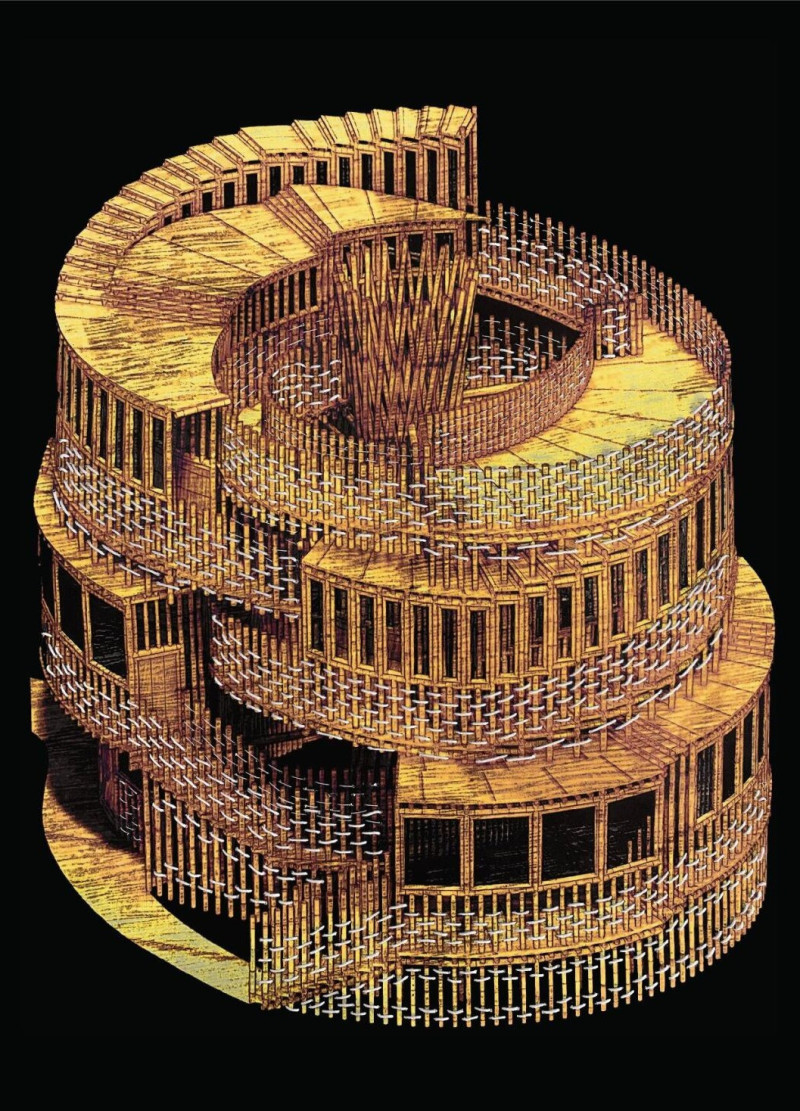5 key facts about this project
The design is located in Providence, Rhode Island, aiming to create an inclusive space for both blind and sighted residents. It emphasizes accessibility and interaction through thoughtful use of tactile elements. The project integrates these features into its overall concept, highlighting the importance of navigation and community engagement in a living environment.
Concept and Structure
The foundation of the design revolves around the idea of the "Architectonic sensor." This concept employs bamboo and rope as essential materials. Bamboo is lightweight and strong, making it suitable for structural components. Rope adds a textural quality that engages the senses, particularly benefiting those who rely on touch. The combination of these elements enhances both the physical stability of the structure and the sensory experience of its users.
Spatial Organization
The planning of the space is based on principles similar to braille. Pathways, walls, and staircases are arranged to create predictable routes that residents can follow with confidence. This organized layout supports easier navigation for all inhabitants. Communal and shared areas are also thoughtfully included, reflecting the belief that architecture should facilitate connections between individuals while providing private spaces where they feel secure.
Community and Engagement
The design promotes social interaction by including communal spaces that encourage gatherings. These areas, such as courtyards, serve as destinations within the overall layout. They are designed for relaxation and social activities, reinforcing a sense of belonging among residents. The positioning of these spaces enhances the flow between private and public areas, fostering community ties.
Tactile Navigation
A key element of the design is the tactile navigation system, which goes beyond standard architectural features. The incorporation of sensory guides within the building allows all users to navigate their surroundings more confidently. This design principle demonstrates a commitment to creating an equitable environment for everyone. It shows how architecture can improve the daily lives of residents through considered design choices.
Upon entering, tactile maps are prominently displayed, guiding people along their journey. These details highlight the project's focus on sensory experience and demonstrate a thoughtful approach to navigating the built environment.




















































